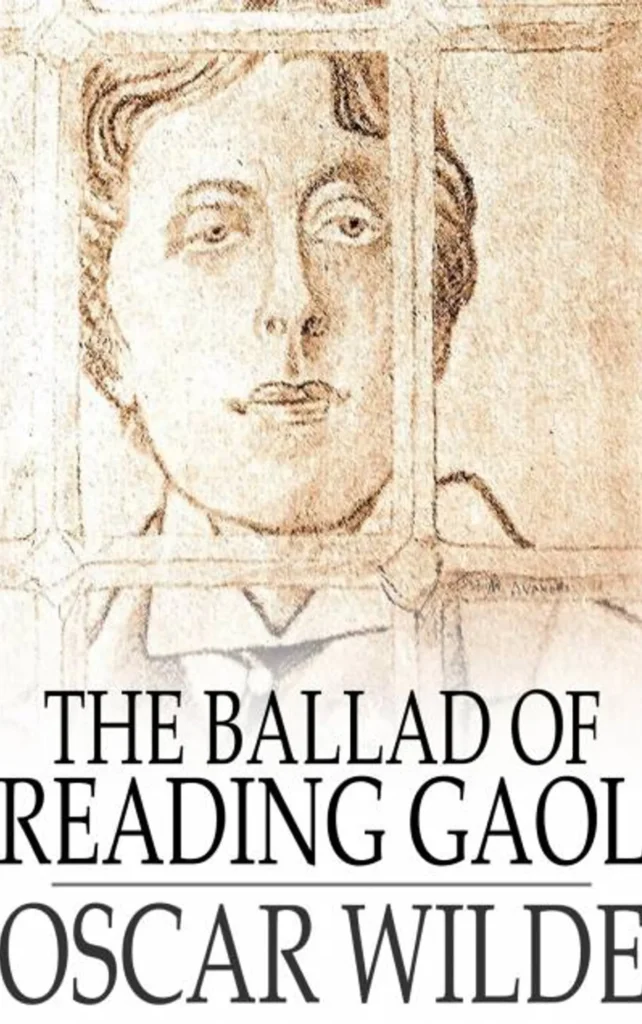
About Poem-The Ballad of Reading Gaol
| Title | The Ballad of Reading Gaol |
| Author | Oscar Wilde |
| Date of publication | 1898 |
| Genre | Narrative poem |
| Theme | Crime, punishment, and redemption |
| Form | Ballad (109 stanzas of six lines in iambic tetrameter with an ABCBDB rhyme scheme) |
| Key literary devices | Imagery, symbolism, and personification |
| Famous lines | “And none a dirge will dare to sing / For him that was a convict king.” |
Themes-The Ballad of Reading Gaol
- Dehumanization: The degrading impact of imprisonment on inmates.
- Social Injustice: Critique of a punitive justice system.
- Empathy: The need for compassion and understanding.
- Hypocrisy: Society’s judgment and cruelty towards prisoners.
- Death Penalty: The inhumanity of state-sanctioned executions.
The Ballad of Reading Gaol Summary & Analysis
The Ballad of Reading Gaol is a powerful and poignant poem by the renowned Irish playwright, poet, and author Oscar Wilde. Written during his imprisonment in Reading Gaol (a British prison) from 1895 to 1897, the poem is a reflection on the harsh realities of incarceration, the dehumanizing effects of punishment, and the universal themes of suffering, empathy, and social injustice. It is a work of profound depth and emotional resonance.
Stanza 1
The poem begins with the speaker recounting the sight of a distant, nameless prisoner being led to his execution. The image of the man’s white face, tinged with terror and despair, sets the somber tone for the entire poem. This stanza introduces the central theme of the dehumanizing impact of the prison system on its inmates.
Stanza 2
Wilde shifts the focus to the prison environment, describing the bleak and sterile surroundings of Reading Gaol. He emphasizes the monotony and despair of prison life, highlighting how the prisoners’ individual identities are stripped away as they become mere numbers in the system. The stanza touches on the idea that the punishment is not just for the crime but for the loss of humanity in the process.
Stanza 3
The poem delves into the emotional and psychological toll that imprisonment takes on the inmates. The prisoners’ lives are marked by the monotony of routine, and their isolation from the outside world leads to a sense of hopelessness. The speaker reflects on the futile efforts of the inmates to find solace and meaning in their lives.
Stanza 4
Wilde explores the idea that the prisoners are separated from the rest of society, and this isolation leads to a loss of empathy and compassion. He depicts how the prisoners are forgotten by the outside world, as if they are in a separate realm of suffering. This stanza underscores the dehumanization that the inmates endure.
Stanza 5
The poem’s tone becomes more critical of society as a whole. Wilde suggests that those outside the prison walls are quick to judge and condemn the inmates, failing to see their shared humanity. He highlights the hypocrisy of a society that can be so unforgiving and cruel to those who have fallen into its punitive grip.
Stanza 6
The narrative takes a significant turn as the poem recounts the execution of Charles Thomas Wooldridge, a real-life individual who was hanged at Reading Gaol. This event serves as a central moment of reflection for the speaker. The stanza vividly describes the execution, with the hangman and the condemned man standing face to face. The emphasis on the hangman’s face reflects the idea that both the executioner and the executed are bound by the same system of punishment.
Stanza 7
The poem explores the finality and brutality of the execution, with the image of the prison bell tolling as the trapdoor is released. The stanza conveys the horror and the inhumanity of the death penalty, underscoring the cruelty of state-sanctioned violence. The description of the “draggled women sobbing in the sun” evokes a sense of collective grief.
Stanza 8
Wilde reflects on the unfairness and arbitrariness of the punishment, suggesting that society is complicit in the crimes of the imprisoned. He laments the wasted lives and potential of the inmates and calls attention to the tragedy of a system that does little to rehabilitate or reform.
Stanza 9
The poem concludes with a haunting and memorable image of the prison walls themselves. The final stanza underscores the idea that the prison, which was intended to reform, ultimately dehumanizes and destroys those within its confines. The image of the prison’s walls closing in on the inmates is a metaphor for the suffocating and soul-crushing nature of the punitive system.
FAQs for The Ballad of Reading Gaol
What is the poem The Ballad of Reading Gaol about?
The Ballad of Reading Gaol is about the harsh life in prison and the inhumane treatment of inmates, particularly focusing on a real execution and the loss of humanity.
What is the central idea of the poem ballad of the landlord?
The central idea of the poem “Ballad of the Landlord” is the injustice of racism and the abuse of power.
Why is this poem called a ballad?
The poem is called a ballad because it tells a story in a musical way, using simple language and a regular rhyme scheme.
What is the fear in the ballad of reading gaol?
The fear in The Ballad of Reading Gaol is the fear of death.
What does Oscar Wilde mean when he says each man kills the thing he loves?
Oscar Wilde means that we can all destroy the things we love, whether intentionally or not. This can be done through words, actions, or simply through neglect. It is a reminder that we should cherish the things we love and be careful not to take them for granted.





![The Catcher In The Rye Summary, Themes & Characters [by J. D. Salinger] The Catcher In The Rye Summary, Themes & Characters [by J. D. Salinger]](https://atozsummary.com/wp-content/uploads/2023/06/The-Catcher-In-The-Rye-Summary-Themes-Characters-by-J.-D.-Salinger.webp)




